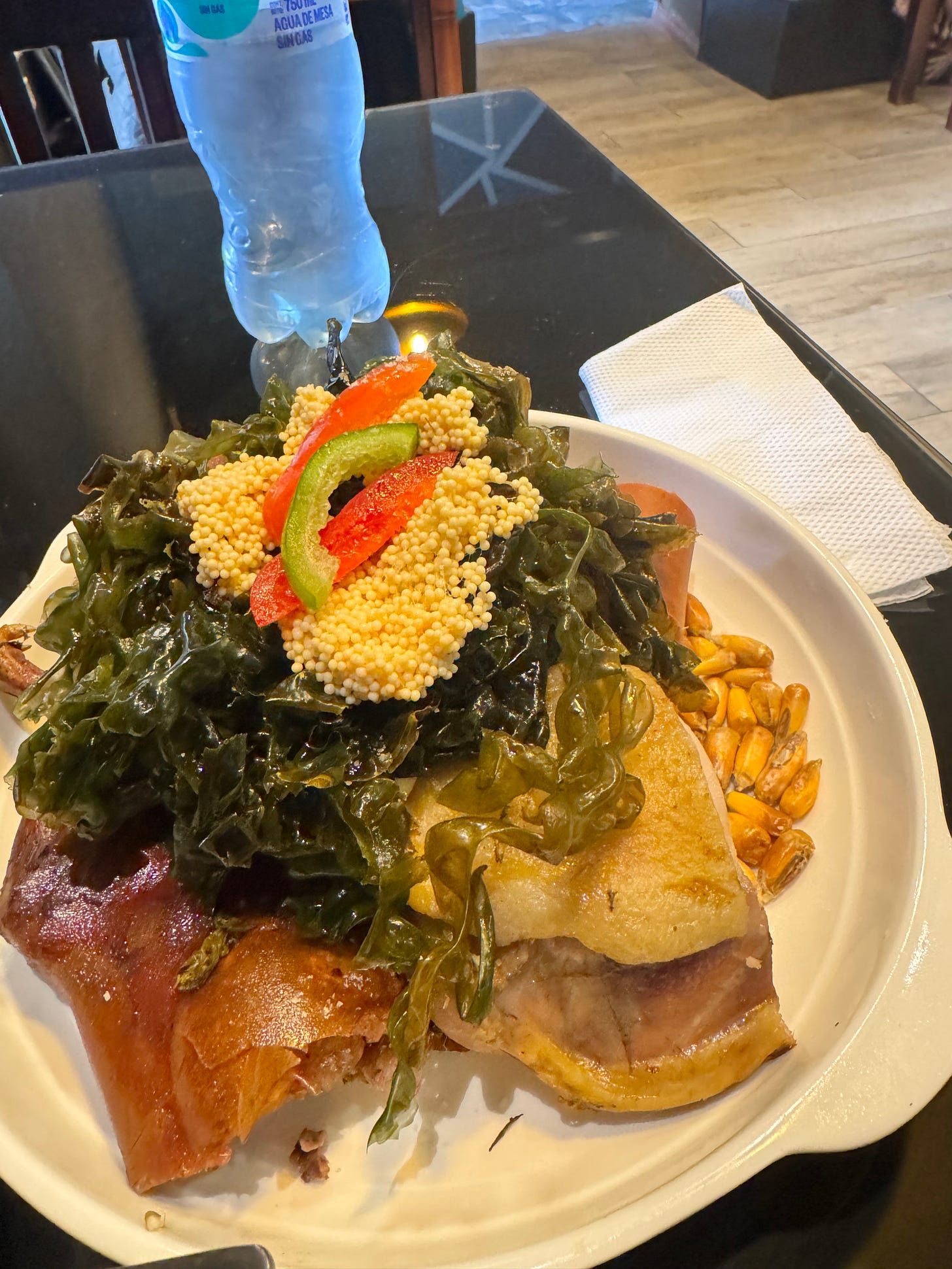Catholic or Christian?
Reflections on faith, food, and the language of belief in the highlands of Peru
Today is a public holiday—Corpus Christi.
And Cusco has turned out!
This may be the most unique celebration of Corpus Christi in the world. Here, the population blends Incan music, food, and costumes with a deeply Catholic procession celebrating the Body and Blood of Jesus at the Last Supper. The parade of saints and virgins lasts for hours, winding its way through packed streets and a cloud of incense and color.
The special meal of the day is Chiri Uchu. It’s hard to describe. Imagine half a guinea pig (cui), a giant chicken leg, cheese, a kind of bread that tastes like a cross between sweet cornbread and hushpuppies, roasted corn kernels, seaweed, fish roe, and a few other things. It’s served cold, piled high on a plate, and eaten with your hands. Wham—you’ve stepped into an 800-year-old Incan tradition.
I won’t comment on the deliciousness of the plate. Some things depend on how you were raised. My Spanish teacher, for example, was appalled to learn we eat fried catfish (bagre frito) in Mississippi. I guess we’re even.
This is the most immersed I’ve ever been in Catholic traditions. Cusco is a spiritual crossroads: ancient Incan roots, Spanish Catholicism, and a relatively new wave of Protestantism.
When I met one of my teachers, I introduced myself as a professor and a Pastor of Music. She asked, “Catholic or Christian?”
The question surprised me.
Later, I asked her more about it. I clarified that I’m Baptist. She clarified that she wasn’t implying Catholics aren’t Christians—or that I was something else entirely. It was, admittedly, a bit confusing.
Protestants of all kinds make up only about 14% of the Cusco region. The earliest Protestant missionaries arrived in the early 19th century, and while they planted some congregations, today there are only a handful of small Baptist churches. Most of that 14%? Pentecostal.
As I reflect on the history here—the Spanish colonization, the growth of Christianity in its many forms—I’m reminded that God is bigger than any denomination.
When Baptists first came to Cusco, they were marginalized and even threatened by the Catholic establishment. And yet, when any group claims to hold all the answers, perhaps it’s leaving out the mystery of God’s infinite love.
Paul writes in Romans 8:
For I am sure that neither death nor life, nor angels nor rulers, nor things present nor things to come, nor powers, nor height nor depth, nor anything else in all creation, will be able to separate us from the love of God in Christ Jesus our Lord.
Doesn’t that speak to the greater mystery of God’s love?
Later, my teacher Martha told me it’s a heart issue for her. “Jesus lives in me,” she said.
As a good Baptist, that sounded just right to me.
We found common ground—not in a building, but in a Person.



I'm so fascinated by your experience with the different flavors of Catholicism in that part of the world. Thanks for the history lesson. I hope you get immersed with some of the Pentecostals too so you can share how they fit into the puzzle. ... and - how was that earth quake? Did you feel it?